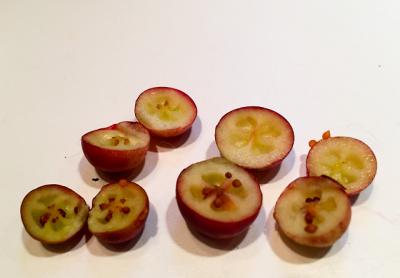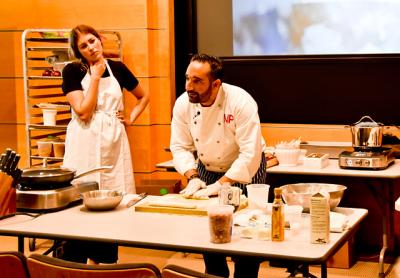News for Foodies: 10.25.18
News for Foodies: 10.25.18
Thanksgiving Tips
A cooking class on preparing healthy but satisfying side dishes for Thanksgiving dinner will be held at Sang Lee Farms in Peconic on Nov. 8 from 5:30 to 8 p.m. Karen Lee, an owner of the farm, and Stefanie Sacks, a culinary nutritionist, will teach students how to make five plant-based dishes. A family-style meal will be served following the class. The cost is $150, and registration is via the farm’s website.
Nick and Toni’s Specials
Pizzas made in a wood-burning oven are back on the dinner menu four nights a week at Nick and Toni’s in East Hampton. They are available Sunday, Monday, Wednesday, and Thursday. The restaurant is also offering three-course prix fixe dinner specials. A pizza or pasta entree with a romaine or mixed green salad, and a dessert of either gelato or sorbetto is $32. A roasted chicken entree with either a romaine salad or penne appetizer, plus a quarter tartufo for dessert is $37. The chef’s choice dinner, featuring an appetizer, entree, and dessert of the day is $45. Bar menu specials, offered weekdays from 5:30 to 6:30 p.m. and on Sundays from 2:30 to 6:30 p.m., include an artisanal cheese plate and crostini for $10, and bruschetta for $6.
Demo and Dinner
Arie Pavlou, the chef at Bistro Ete in Water Mill, will hold a cooking demonstration and wine dinner on Saturday at 4 p.m. The cost is $125, plus tax and tip. Reservations are by calling the restaurant.
Planning Ahead
Long Island Restaurant Week, a promotion featuring $29.95 three-course prix fixes, will run from Nov. 4 through 11. Reservations are being taken now at the participating restaurants, which include 10 on the South Fork and two in Greenport.
Almond in Bridgehampton is taking reservations for holiday parties, and offering a gift certificate for up to $200 to those who book an event. The restaurant can accommodate up to 200 people for cocktails, and 80 for sit-down dinners. Reservations are by emailing [email protected]




